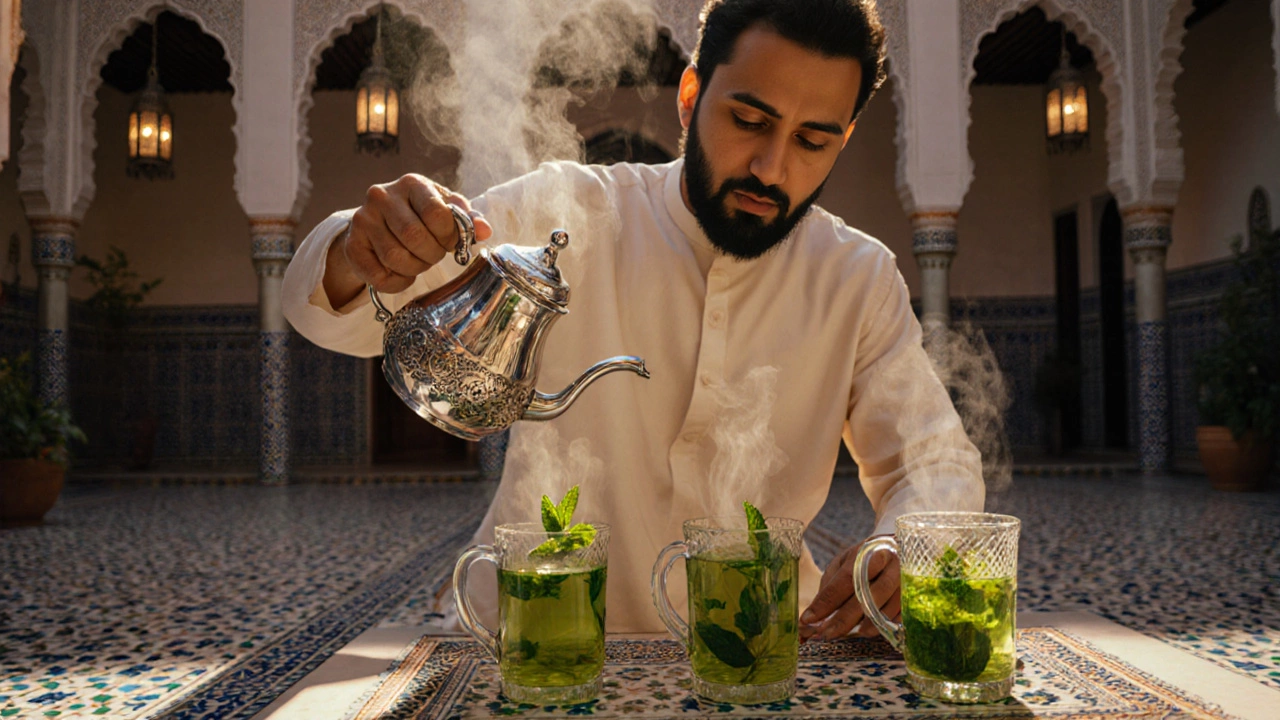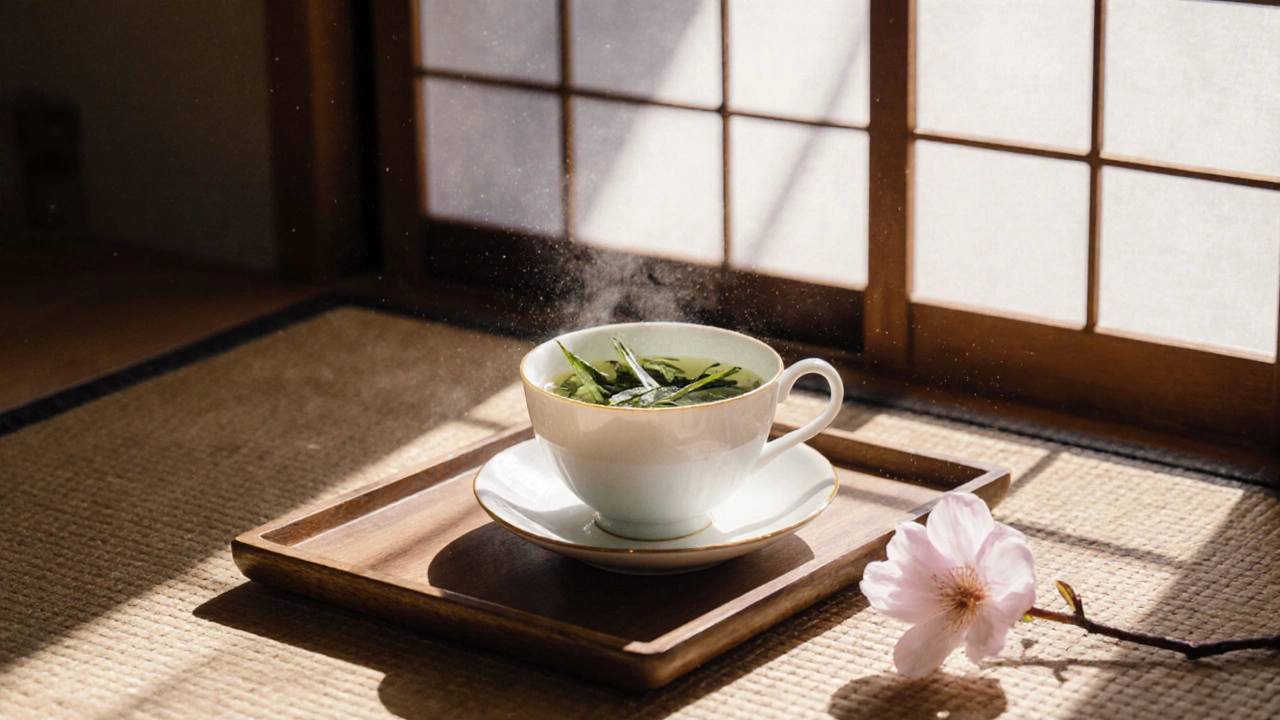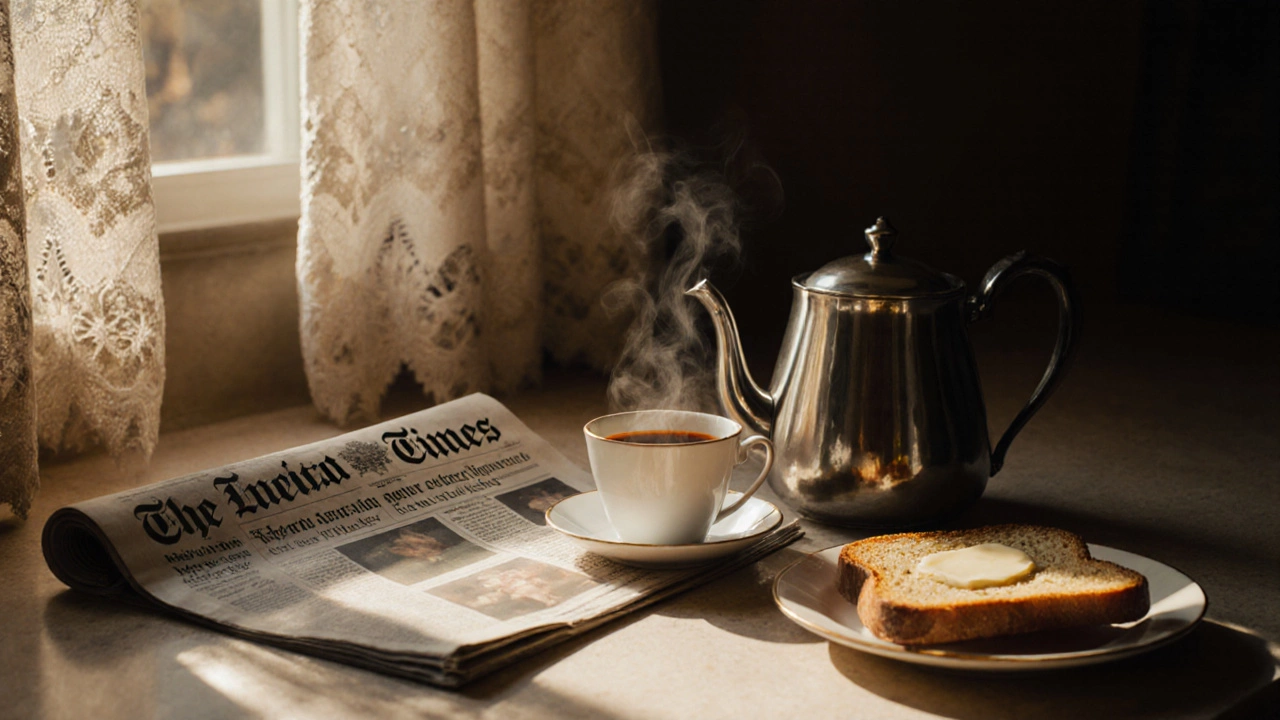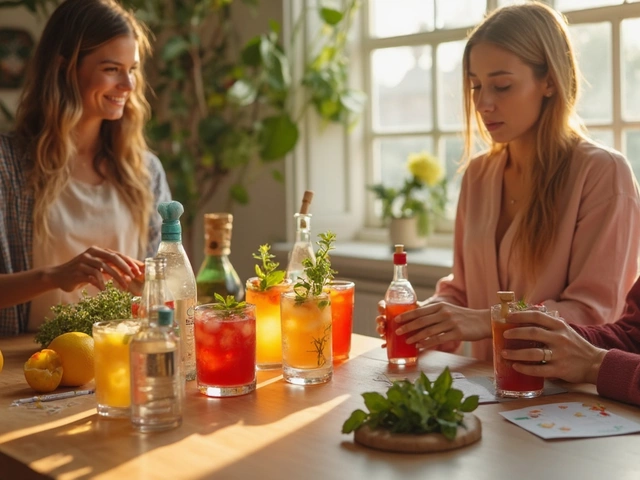Tea Selector Tool
Find Your Perfect Tea
Discover your ideal tea based on your current mood and needs. The most delicious tea is the one that fits your moment.
Your Perfect Tea
Select your preferences to see your recommendation
No recommendation yet
There’s no single answer to what’s the most delicious flavor of tea-because taste isn’t universal. It’s shaped by where you’re from, what you grew up drinking, and even the time of day. But if you’re asking because you want to find your next favorite cup, you’re not alone. Millions of people spend their mornings, afternoons, and evenings chasing that perfect sip. And while some swear by the boldness of black tea, others live for the quiet sweetness of white tea or the herbal punch of mint. The truth? The most delicious tea is the one that makes you pause, breathe, and smile.
Black Tea: The Global Favorite That Still Wins Hearts
Black tea is the most consumed tea in the world-75% of all tea drunk comes from this category. Why? It’s bold, reliable, and holds up to milk and sugar. In countries like the UK, Russia, and Turkey, black tea isn’t just a drink-it’s a ritual. English Breakfast, with its deep, malty notes, is a morning anchor for millions. Earl Grey, scented with bergamot orange, brings a bright, citrusy lift that cuts through the fog of a lazy Sunday. These aren’t just flavors; they’re habits. Tea Forte’s sales data shows Earl Grey and English Breakfast consistently topping their charts, while Mariage Frères sells their Earl Grey French Blue at €31.20 a tin because people are willing to pay for quality. It’s not just about caffeine-it’s about comfort. A strong cup of Assam or Ceylon black tea can wake you up faster than an alarm. But don’t mistake strength for simplicity. A well-made Darjeeling can taste like wildflowers and autumn leaves, layered and nuanced.
Green Tea: The Delicate Art of East Asia
In China and Japan, green tea is sacred. It’s not just about flavor-it’s about mindfulness. Japanese Sencha, steamed and dried quickly, gives you a fresh, grassy taste with a touch of sweetness. Matcha, the powdered version, is richer, almost creamy, with an earthy depth that lingers. In China, Dragon Well (Longjing) is the crown jewel: flat, pan-fired leaves that brew into a smooth, nutty cup with no bitterness. The trick? Water temperature. Green tea needs cooler water-around 160-180°F. Boil it too hot, and you’ll get a bitter, astringent mess. That’s why many tea lovers in Tokyo or Hangzhou use thermometers. It’s not pretentious; it’s necessary. If you’ve only tried cheap green tea bags from the supermarket, you haven’t tasted green tea at all. Real Sencha or Longjing tastes like spring morning-clean, alive, and quiet.
Moroccan Mint Tea: More Than a Drink, It’s a Ceremony
Walk into a home in Marrakech, and you’ll likely be greeted with a tall glass of steaming green tea, poured from a height, frothy and sweet, with fresh mint leaves floating on top. That’s Moroccan mint tea-and it’s not just delicious, it’s cultural. Made with gunpowder green tea, tons of spearmint, and a generous spoonful of sugar, it’s served in ornate silver cups called keesan. Locals call it “Berber whiskey,” not because it’s alcoholic, but because it’s essential to hospitality. You don’t refuse it. You don’t rush it. You sip slowly, letting the heat and sweetness warm you from the inside. This tea doesn’t compete with black or green tea-it exists in its own world. And in North Africa, it’s the undisputed king. If you’ve never tried it, you’re missing one of the most joyful tea experiences on the planet.

White Tea: The Quiet Contender
White tea is the least processed of all teas. Made from young buds and leaves, it’s air-dried with minimal handling. That means it’s delicate-light, airy, and subtly sweet. Silver Needle, made only from unopened buds, tastes like honeydew melon and fresh hay. White Peony adds a touch of fruitiness, almost like dried apricots. It’s the tea you drink when you want calm, not stimulation. No bitterness. No astringency. Just purity. It’s not as popular as black or green tea, but among connoisseurs, it’s revered. If you’ve ever sipped a white tea and thought, “This is too mild,” you probably brewed it too long or too hot. Try it at 170°F for 4 minutes. You’ll taste the difference.
Herbal and Rooibos: The Caffeine-Free Crowd
Not all teas come from the Camellia sinensis plant. Rooibos, from South Africa, is a red, naturally caffeine-free infusion with a rich, earthy sweetness-like caramelized wood. It’s smooth enough to drink at night, and packed with antioxidants. Then there’s chamomile, peppermint, and hibiscus. Each has its own role. Chamomile for sleep. Peppermint for digestion. Hibiscus for a tart, cranberry-like zing. The Republic of Tea’s New S’mores Herbal Tea? That’s not tea at all-it’s a dessert in a cup. And people love it. These aren’t “tea substitutes.” They’re tea alternatives with their own traditions, flavors, and fans. Rooibos, once obscure, is now a global favorite because it’s gentle, naturally sweet, and works with milk, honey, or lemon.
What Do People Actually Buy? Real Data, Not Just Opinions
Let’s look at what’s selling, not just what’s trendy. Tea Forte’s top sellers in 2023: Earl Grey, English Breakfast, Jasmine Green, and Ginger Lemongrass. The Republic of Tea’s bestsellers? Earl Greyer Black Tea, Ginger Peach Black Tea, and New S’mores Herbal Tea. Mariage Frères’ most promoted blends? Earl Grey French Blue, Marco Polo, and Noël Lucky. These aren’t random picks. These are the flavors that keep people coming back. Jasmine Green isn’t just floral-it’s nostalgic. Ginger Lemongrass isn’t just spicy-it’s invigorating. And New S’mores? It’s playful. It’s comfort. It’s a kid’s treat turned adult ritual. The common thread? These teas don’t just taste good-they connect to a moment. Morning. Wind-down. Celebration. Grief. Joy.

Why You Should Stop Looking for the “Best” and Start Exploring
The idea of a single “most delicious” tea is a trap. It’s like asking for the best color or the best season. It depends on what you need right now. Need energy? Black tea. Need calm? White tea. Need warmth? Moroccan mint. Need sleep? Rooibos. Need joy? Try a new blend every week. Tea culture isn’t about ranking-it’s about discovery. Start with one that matches your mood. Brew it right. Pay attention. Notice how the steam smells. How the flavor changes as it cools. That’s where the real magic is.
How to Taste Tea Like a Pro (Without the Snobbery)
You don’t need a fancy teapot or a degree in botany. Just follow these three steps:
- Use fresh, cold water. Tap water with chlorine? It ruins flavor.
- Heat it to the right temperature. Black tea: boiling (212°F). Green and white: 160-180°F. Herbal: boiling.
- Steep for the right time. Black tea: 3-5 minutes. Green: 1-2 minutes. White: 4-5 minutes. Herbal: 5-7 minutes.
Oversteep? Bitter. Understeep? Weak. Use a timer. Taste it at 30-second intervals after the minimum time. You’ll hear the flavor unfold.
Final Thought: Your Perfect Cup Is Waiting
The most delicious tea isn’t the one everyone else loves. It’s the one that fits your life. Maybe it’s a strong cup of Assam with a splash of milk on a rainy Sydney morning. Maybe it’s a cup of jasmine green tea while reading on your balcony. Or maybe it’s Moroccan mint tea shared with a friend after dinner. Don’t search for the best. Search for the right one-for today, for you.
Is black tea really the most delicious tea?
Black tea is the most consumed tea worldwide, but that doesn’t mean it’s the most delicious. Deliciousness is personal. Many people love its boldness, especially in blends like Earl Grey or English Breakfast. But others find it too strong. Green, white, or herbal teas may feel more satisfying to them. It’s about what your palate prefers, not global sales numbers.
What tea is best for beginners?
Start with something approachable: Earl Grey for its citrusy aroma, or a mild green tea like Jasmine. Avoid overly bitter or strongly roasted teas at first. Tea Forte’s Ginger Lemongrass or The Republic of Tea’s Ginger Peach Black Tea are great entry points-they’re flavorful but not overwhelming. Use loose leaves or quality tea bags, and brew with water that’s not boiling (unless it’s black tea). Taste slowly. Let your preferences grow.
Can tea be too strong or bitter?
Yes. Over-steeping is the #1 reason tea tastes bitter. Black tea should steep 3-5 minutes, green tea only 1-2. Water that’s too hot also causes bitterness-especially for green and white teas. Use 170°F for those, not boiling. If your tea tastes harsh, try reducing the time or lowering the temperature. You’ll be surprised how much better it tastes.
Is herbal tea really tea?
Technically, no. True tea comes from the Camellia sinensis plant. Herbal teas-like chamomile, rooibos, or peppermint-are infusions made from herbs, flowers, or roots. But in everyday language, everyone calls them tea. And they’re just as valid. Rooibos, for example, has a rich, naturally sweet flavor and no caffeine. It’s not inferior-it’s different. Many people prefer it for evening drinking.
What’s the best way to store tea?
Keep tea in an airtight container, away from light, heat, and strong smells. Don’t store it near spices, coffee, or soap. A cool, dark cupboard is ideal. Green and white teas lose freshness faster than black tea-use them within 6 months. Black and herbal teas can last up to a year. If your tea smells flat or dusty, it’s past its prime.
Next time you brew tea, don’t just drink it-taste it. Notice the aroma. The texture. The way the flavor changes as it cools. The most delicious tea isn’t the one with the fanciest label. It’s the one that feels like home.


